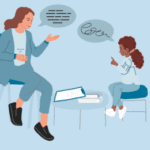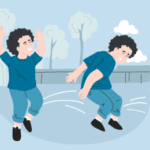
Blog
Understanding Autism Regression in Children
July 9, 2024
Understanding Autism Regression in Children
Understanding Autism Regression in Children
What is Autism Regression?
Autism spectrum disorder (ASD) is marked by a range of symptoms that affect communication, behavior, and social interaction in varied degrees. While the paths of development in autistic children can be diverse, regression can happen to many, raising concerns and questions in those who care for them.
Autism regression is characterized by the loss of acquired skills, often observed in areas such as language, social skills, and play. Regression can happen suddenly or gradually and usually becomes apparent between the ages of 1 and 3. Skills lost can be significant, and the change can be alarming.
What Triggers Regression in Autism?
The exact causes of regression are unknown, and research on the topic is still ongoing. Potential triggers may include:
- Biological factors:Changes in brain development or function around key developmental periods.
- Environmental stressors:Events such as family upheaval, moving house, or starting school.
- Medical issues:Seizures, hearing loss, or sleep disturbances.
It’s essential to note that no specific actions by parents or educators cause regression, and it does not reflect the quality of care or teaching the child receives.
Identifying Regression
Identifying regression early is critical for supporting the child effectively. Signs to look out for include:
- A marked decrease in the use of words or sentences.
- Decreased eye contact or social interest.
- Lack of engagement in activities the child used to enjoy.
- Repetitive behaviors that may increase or become more pronounced.
If you notice symptoms of regression, it’s important to consult with a healthcare provider or specialist.
How to Support A Child Experiencing Regression
Supporting a child through regression involves patience, understanding, and coordinated efforts among parents, educators, and healthcare professionals. Here are some strategies:
- Stay consistent:Maintain routines and structures that the child is familiar with.
- Communication:Use alternative forms of communication if necessary, such as pictures or sign language.
- Monitor health:Ensure that medical needs are met and check for underlying health issues.
- Document changes:Keep a detailed record of the skills lost and any emerging patterns.
- Professional guidance:Work with specialists to adjust the child’s support plans.
Ways Educators Can Help
Educators play a vital role in helping a child through regression. They can:
- Adjust educational goals and tailor instruction to the child’s current abilities.
- Create a supportive and inclusive classroom environment.
- Collaborate with parents and support staff to implement consistent strategies.
Coping as Parents
Watching a child go through regression can be emotionally distressing for parents. Here are some tips for coping:
- Seek support:Find local or online support groups to connect with other families experiencing similar challenges.
- Educate yourself:Learn as much as possible about autism regression so that you can advocate for your child effectively.
- Practice self-care:Take time for yourself and seek professional help if you’re struggling to manage stress or emotions.
Final Thoughts
While autism regression can present significant challenges for both the child and those who support them, understanding the phenomenon and knowing how to respond can make a substantial difference. It’s essential for those involved to remember that they are not alone and that resources and assistance are available.
Above all, patience and love remain crucial components on this unique developmental path. Although regression in autism can be a hurdle, with the right strategies and support, children can continue to learn and grow in their own distinct and wonderful ways. Remember to observe changes, seek help early, and adapt your approach as needed. Never forget that every child has the potential to recapture lost skills and develop new ones.











































































